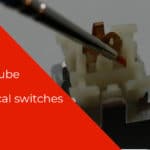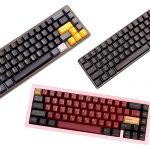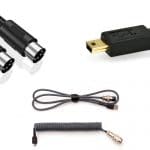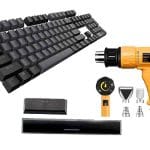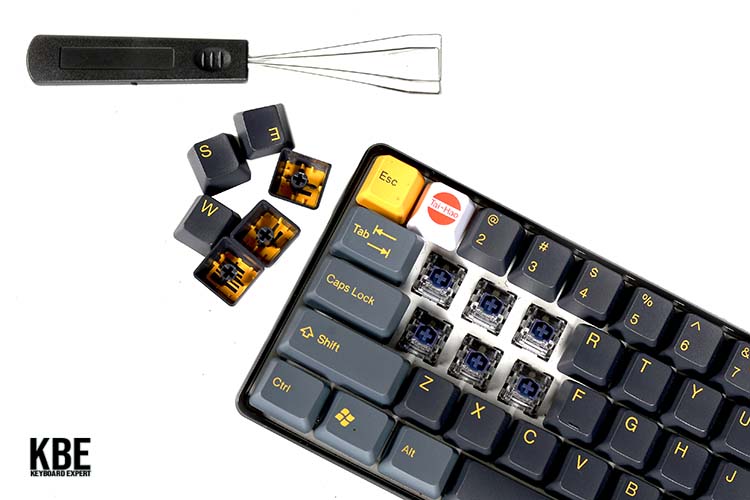
Keyboard enthusiasts generally agree that mechanical keyboards are more durable than their membrane or rubber dome counterparts. The increased durability is primarily due to mechanical keyboard switches that have a longer keystroke lifespan. However, that still leaves a question about the durability of the keycaps. Many people new to the hobby wonder how durable mechanical keyboard caps are and how long they will last.
Custom keycap sets are relatively durable, but several factors will determine the actual lifespan of any keycap. The manufacturing process and the material used to make the keycaps will significantly impact durability. Lastly, the amount of wear and tear and the total number of keystrokes will affect how long keycaps last.
One of the most appealing features of a mechanical keyboard is the ability to change the keycaps to your liking. While the switches are the workhorse of any mechanical keyboard, they remain hidden, unlike keycaps which easily show their age. While some switches have a lifespan rating of 50+ million keystrokes, not all keycaps are durable enough to outlive the switches.
Below will discuss the average lifespan of some custom keycap sets, some of the different processes and materials used to make keycaps and how that impacts their durability and lifespan.
How Long Do Custom Keycap Sets Last?
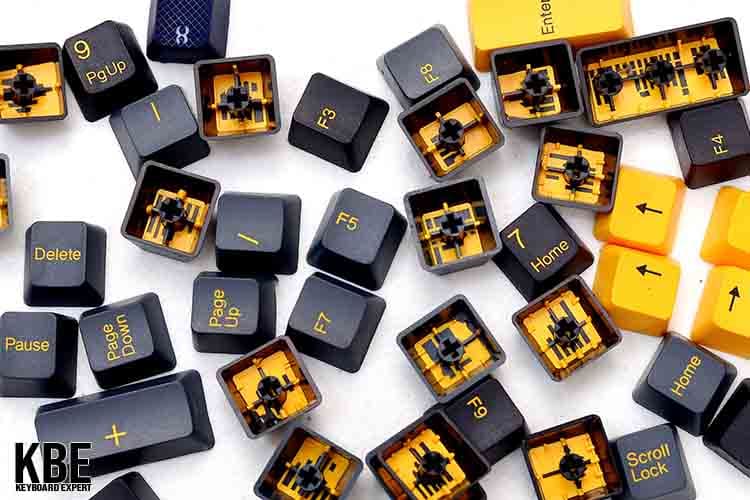
Custom Keycaps come in various styles, but all serve essentially the same function. Custom keycaps differ from standard keycaps because they come in many colors and styles and allow the user to customize the aesthetics of their keyboard. Some examples of the materials used are plastic, metal and rubber.
Generally, however, custom keycap sets are made from two kinds of plastic, namely ABS and PBT plastic. Both raw materials produce great custom keycap sets depending on the manufacturer and their process. However, PBT keycaps are objectively more durable than ABS keycaps. You can have more of this discussion on this article.
Printing in Custom Keycaps
As its basic function, keycaps serve as the keyboard that makes direct contact with the user. Keycap legends are printed on top of each keycap through various printing processes discussed later in the article.
Knowledge of these different processes may allow you to determine how long the legends on your keycap will last. Accordingly, legends are also intimately tied to the lifespan of the keycap set.
How are Legends Made on the Keycaps?
Double-Shot Molding
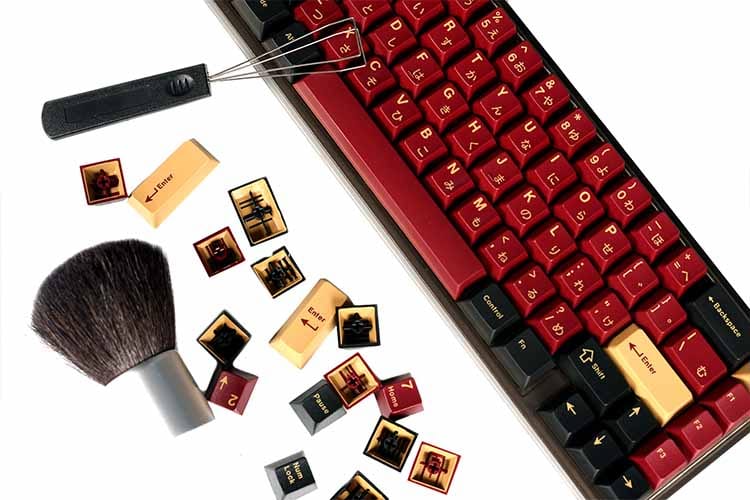
Double-shot molding is the most expensive technique of them all. This process uses two layers of plastic on which the outer one houses the legend while the other one serves as the connector of the keycap to the switch.
The double-shot molding process is commonly used to create backlit and non-backlit keycaps. What is good about this printing technique is that the legend will never fade or chip through wear and tear.
Dye Sublimation
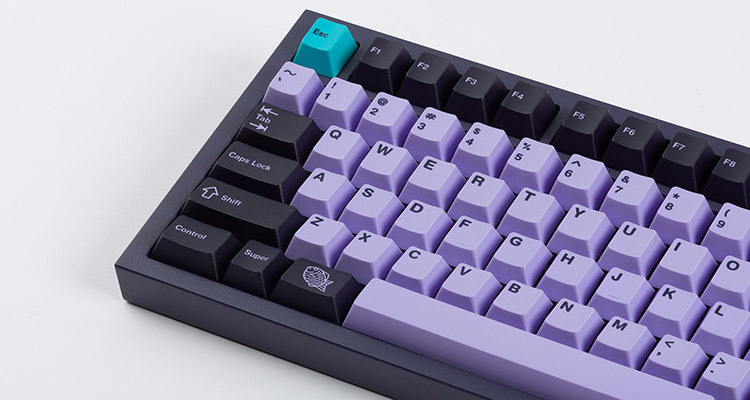
Dye Sublimation is an intricate process that is used to make PBT keycaps. In this process, the legends are printed using a laser and extreme heat, which prints the legend through a dye. What restricts manufacturers from using dye sublimation is that the dye color should be darker than the color of the keycaps.
Laser Etching
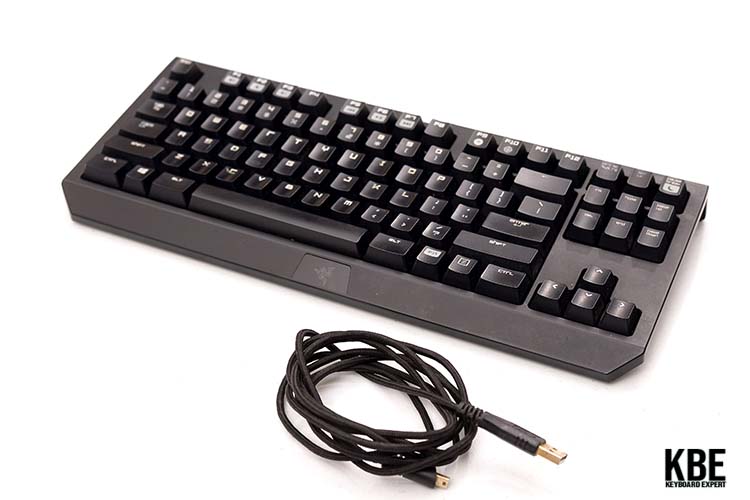
Laser Etching is used to make light-colored keycaps. Like Dye sublimation, it uses a laser to burn the plastic, carving the legend on the keycap. Note that this is different from Laser engraving, which similarly uses a laser not to etch the legend on the keycap but to engrave the legend out of the black paint coating the transparent keycap.
Pad Printing
Pad Printing is one of the traditional ways to put legends on top of keycaps. In this process, you use a rubber pad to transfer the ink from a printing plate to the keycap. Generally, this is cheaper and easier than the printing techniques mentioned above. The latter can only be made with more expensive materials such as a laser.
Keycap Materials
Now that we’ve discussed the various printing processes let’s talk about what makes up your keycaps.
ABS Keycaps
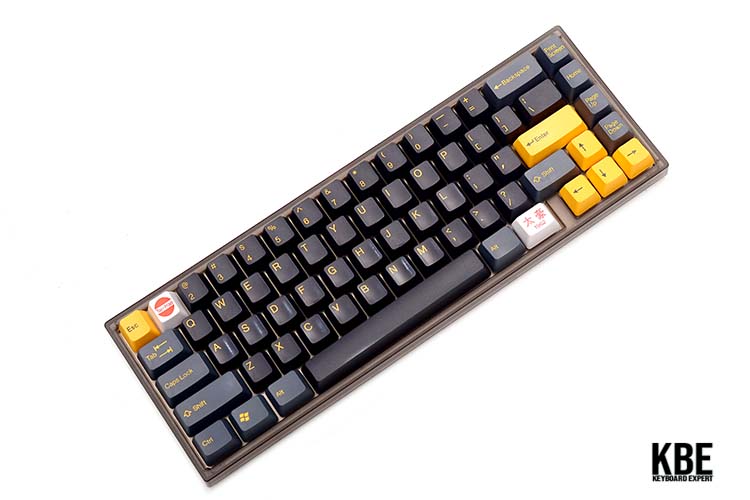
ABS Plastic, otherwise known as Acrylonitrile Butadiene Styrene (ABS), is the most used plastic in making keyboards and keycaps. It is a cheap product and is relatively easy to use.
Since it is also thermoplastic, it can be melted and easily molded for production and recycling. ABS plastic is also used as a base material for some computer peripherals that we use, such as your regular keyboard and mouse. Granting that you do not punch like a professional boxer or one that rages a lot, keycaps made out of ABS plastic will not break.
However, note that ABS keycaps are baned to have that shiny and greasy texture that feels weird and oily to touch. Well-known manufacturers such as GMK and Domikey make excellent ABS custom keycap sets thicker, but their products cannot escape this effect. While this may be the case, ABS keycaps are still usable even though they have reached this point in their lifespan.
PBT Keycaps
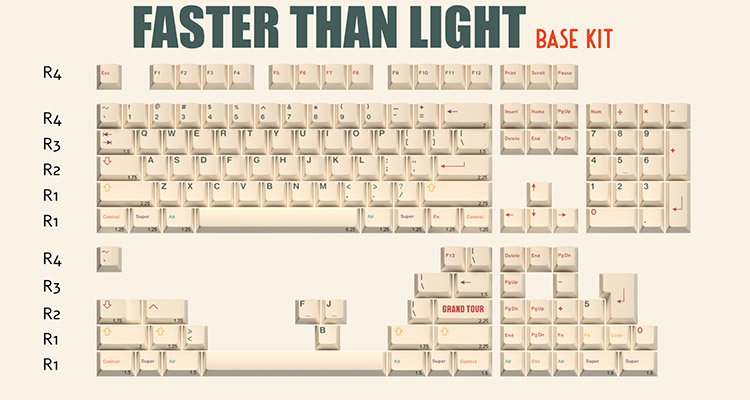
PBT, or Polybutylene Terephthalate, is a more rigid, brittle material used for keycaps. It’s harder to find and produce with, hence the increased price. Like ABS plastic, it is also a species of thermoplastic. It has, however, a higher melting point and makes it so that it’s more heat resistant.
PBT can be mixed with other materials to create a sturdier product. One of the most defining traits of PBT plastic, though, is texture. It has a grainy, almost sandy feel to the touch, and this has the benefit of being resistant to fading or shining.
Other Kinds of Keycaps
Aside from the types above, there are some keycaps to be seen in the market:
Rubber Keycaps
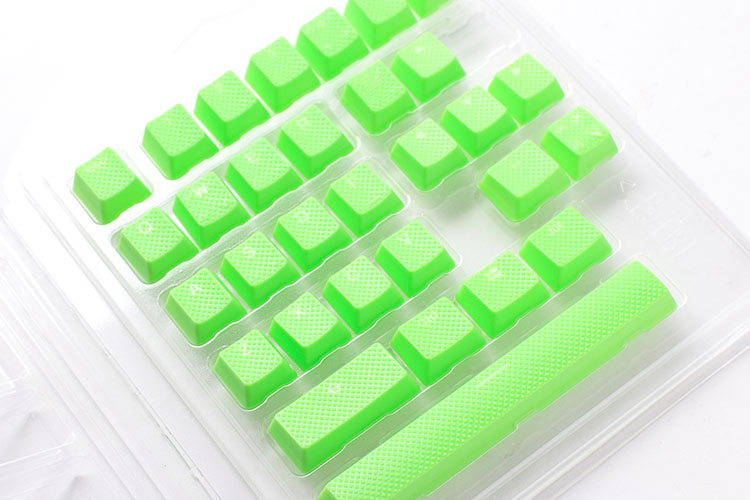
Rubber, or rubberized, keycaps have a rubber coating added to them. They are frequently made with texture added on for tactility, and this is mainly for better finger grip and fewer mistakes during high-intensity gameplay.
3D-Printed Keycaps
As 3D printing has become more accessible, it’s little wonder some have taken advantage of the medium to print their own keycaps. Due to the inherent flexibility of the 3D printer, you can feasibly design and make a keycap with whatever shape you want, given that you know how to, of course.
Artisan Keycaps
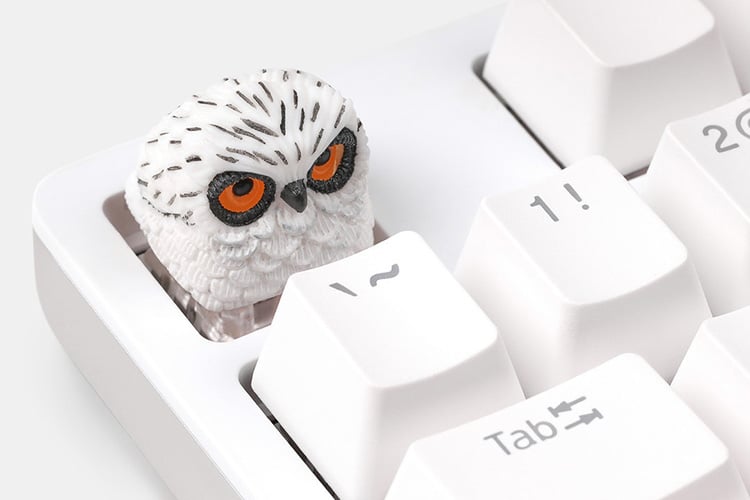
Artisan keycaps are not parts of whole sets, but instead, they are bespoke keycaps made by artists, hence the ‘artisan’ part of the name. They can be made of various materials, such as clay or resin, or even have a theme.
Artisan keycaps include the popular transparent oceanic keycaps you may see floating around forums dedicated to mechanical keyboards or meticulously crafted sakura-themed spacebars. Due to their custom shape, they are primarily used for accents in keyboards or only on keyboards for display.
Others
There are more keycaps out there, of course, like fully metal keycaps (and boards) and those made of wood, but the above keycaps are the most common ones and, therefore, the easiest to buy.
Popular High-End Custom Keycap Brands
GMK
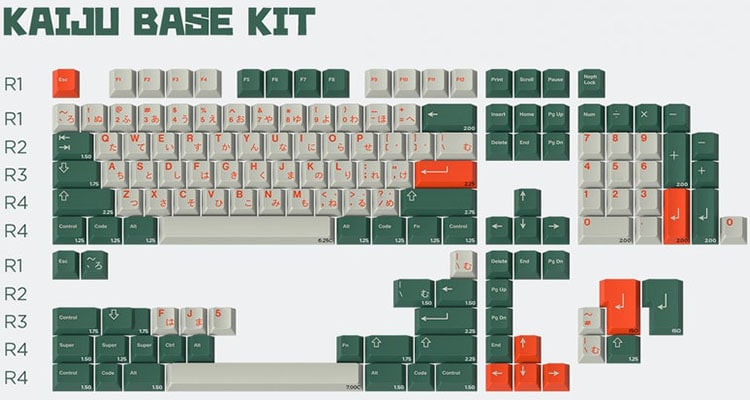
GMK keycaps are extremely popular in the keyboard community. Their keycap sets include their vast catalog, allowing buyers to pick and choose whatever suits their tastes and needs, and their sturdier build is made from thicker ABS plastic.
Their bright, double-shot molded legends easily stand out, and their legends are also cleaner and crisper than the rest of the competition.
In terms of buying, GMK keycaps are made for Cherry MX switches and all clones, like Gateron and Outemu. Any keyboard with that stem is compatible with GMK keycaps. However, GMK has limited runs, and they can only take a limited amount of orders. This gives the product a sense of exclusivity, as once the runs are done, you can’t buy the set from them anymore.
GMK produces custom keycap sets not only of great aesthetics but also of quality. Unlike other manufacturers, they made their ABS keycaps thicker for increased durability.
JTK / JTKeycaps
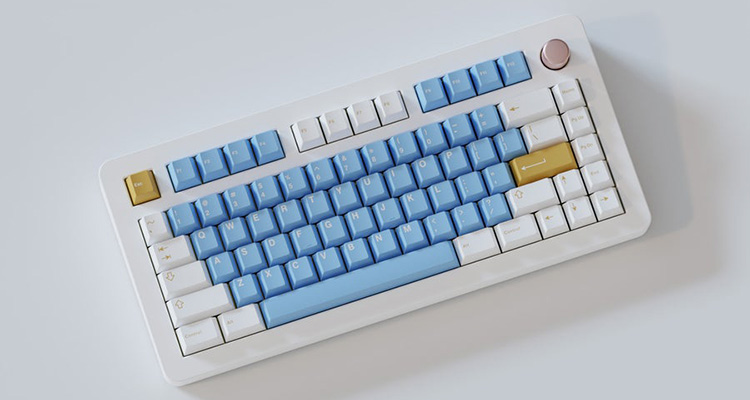
JTK is a manufacturer often compared to GMK, as the keycaps they produce come close to the latter in terms of quality. They are based in China and are one of the many OEM keycap manufacturers.
Though close in make to GMK keycaps, one of the more prominent parts it is lacking is the legend. The symbols may not be in symmetrical order or have uneven printing, but should this not be a problem to you. They have excellent products to get.
As for the durability of their products, rest assured that JTK got you covered. Like GMK, the company also uses ABS plastics but is molded with higher quality.
ePBT/ EnjoyPBT
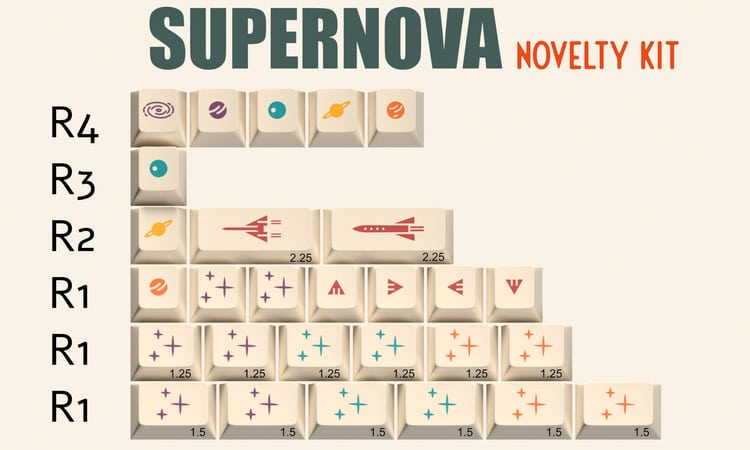
ePBT/EnjoyPBT is known for its eye-catching PBT custom keycap sets and as a manufacturer of ABS ones. Truth and, in fact, one of their best-sellers is a custom keycap set made out of double-shot ABS plastic keycaps.
They sell some of the more affordable keycaps in the market, especially compared to the premium pricing of GMK. While this may be the case, this does not imply that their products’ quality or durability is likewise taken down a notch. Like the ones mentioned above, the brand creates keycap sets that are relatively cheap but appreciated due to their above-market-standard quality.
Why Should You Invest in a Decent Custom Keycap Set?
Custom sets ensure you get to pick and choose any and all specifics, whether that be the shape, color, the font for the legends, or the profile of the key. Keycaps also greatly enhance aesthetic value, leading to a feeling of satisfaction.
When it comes to the durability and longevity of custom keycap sets, one can find it on cheap sets, but you are guaranteed to have it on expensive ones. Of course, there will always be expensive brands that dish out inferior quality products, but with the community’s help, you will quickly know what brands those are and why you should avoid them.
Point in case, if you are looking into buying an expensive custom keycap set for your keyboard, you need not worry about its durability or lifespan as its manufacturers strictly regulate this.
Stephen is the head content creator of Keyboardsexpert. His mechanical keyboard journey began in 2014 when he got his Razer Blackwidow. Since then, he has been fascinated with all things mechanical keyboard-related. He later discovered the custom keyboard hobby and fell in love with the vast customization options. He is currently searching for his endgame and is very excited to share his journey and educate other keyboard enthusiasts.
